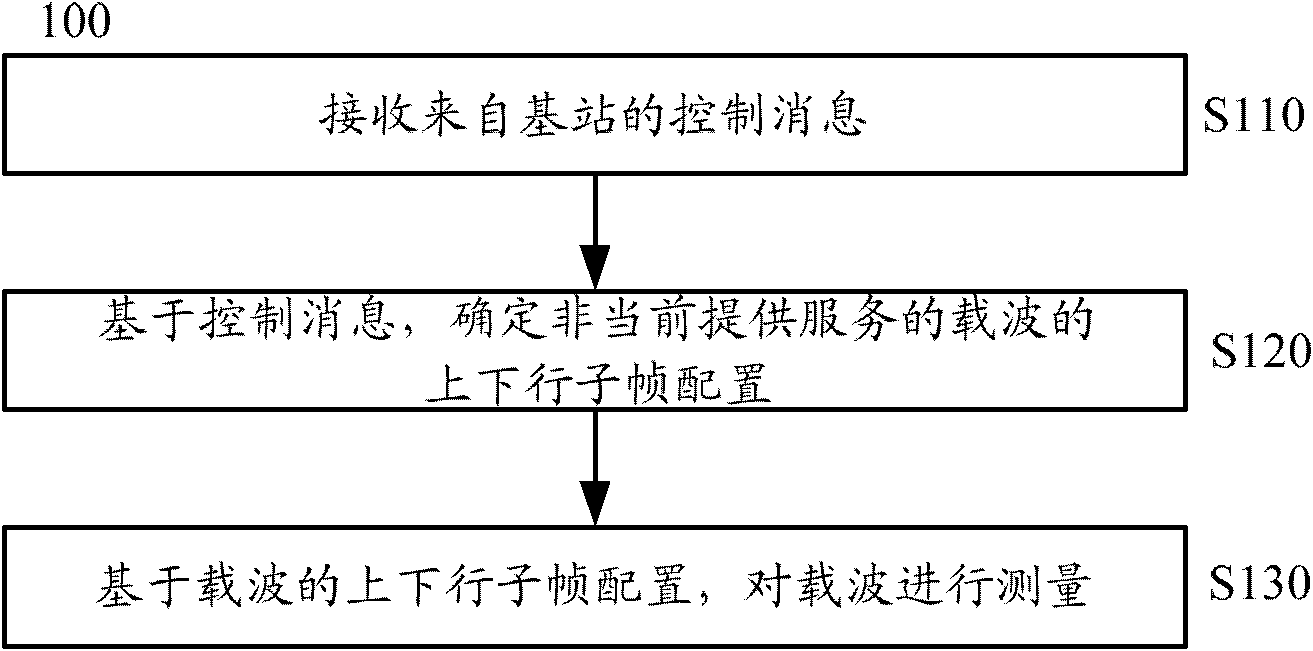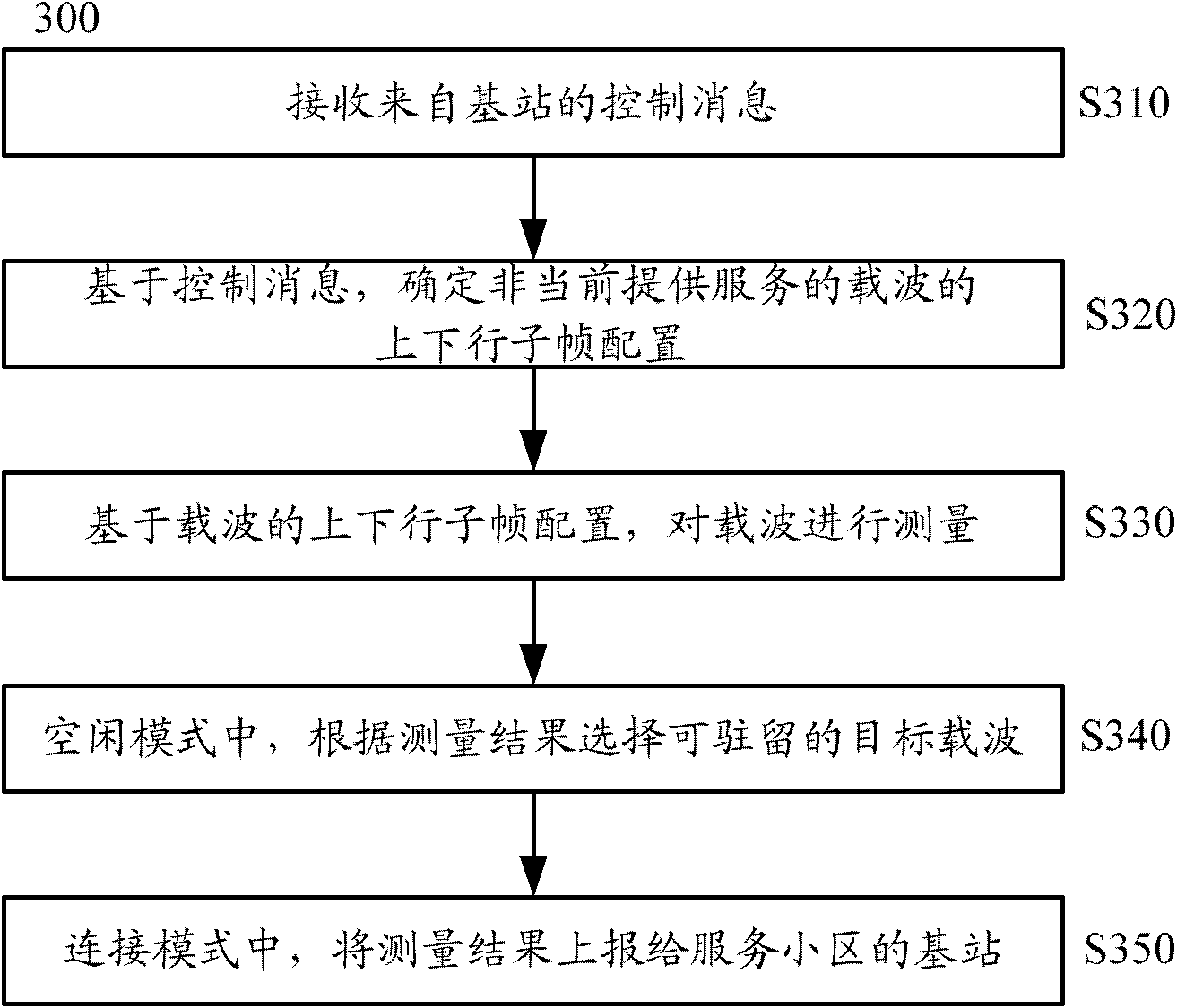Method and apparatus for measuring carrier
A carrier and measurement result technology, which is applied to the separation device of the transmission path, digital transmission system, electrical components, etc., can solve the problems of rising UE chip cost, not knowing the configuration of uplink and downlink subframes of the carrier, and increasing UE measurement hardware resources, etc. To achieve the effect of improving efficiency
- Summary
- Abstract
- Description
- Claims
- Application Information
AI Technical Summary
Problems solved by technology
Method used
Image
Examples
Embodiment Construction
[0021] The following will clearly and completely describe the technical solutions of the embodiments of the present invention with reference to the accompanying drawings in the embodiments of the present invention. Obviously, the described embodiments are part of the embodiments of the present invention, not all of them. Based on the embodiments of the present invention, all other embodiments obtained by those skilled in the art without creative efforts shall fall within the protection scope of the present invention.
[0022] First, combine figure 1 A method 100 for measuring a carrier according to an embodiment of the present invention is described.
[0023] Such as figure 1 As shown, the method 100 includes: in S110, receiving a control message from the base station, the control message is used to indicate the uplink and downlink subframe configuration of the carrier that is not currently providing services; in S120, based on the control message, determining The uplink and...
PUM
 Login to View More
Login to View More Abstract
Description
Claims
Application Information
 Login to View More
Login to View More - R&D
- Intellectual Property
- Life Sciences
- Materials
- Tech Scout
- Unparalleled Data Quality
- Higher Quality Content
- 60% Fewer Hallucinations
Browse by: Latest US Patents, China's latest patents, Technical Efficacy Thesaurus, Application Domain, Technology Topic, Popular Technical Reports.
© 2025 PatSnap. All rights reserved.Legal|Privacy policy|Modern Slavery Act Transparency Statement|Sitemap|About US| Contact US: help@patsnap.com



